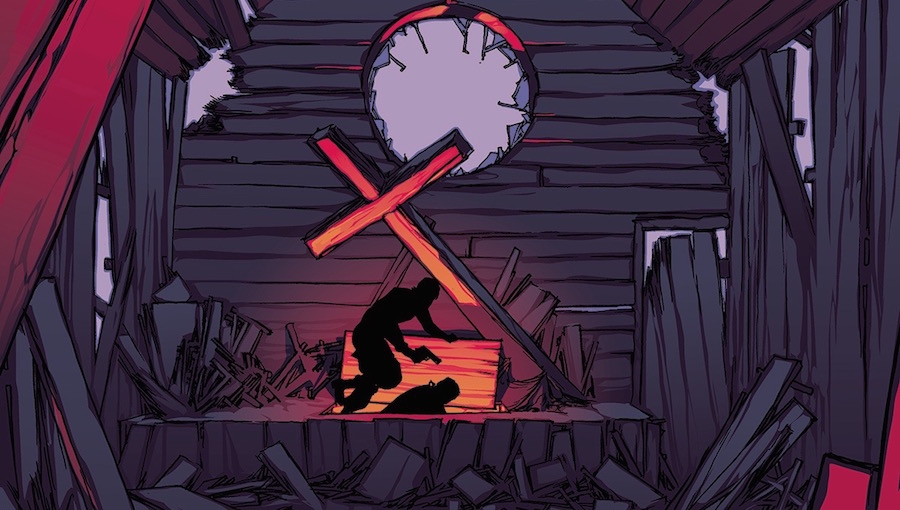After a recon mission gone wrong, Hannah—a religious woman and pilot—is reluctantly the leading officer in charge of a group of soldiers who are stuck behind enemy lines. With little provisions, save for Go-Pills, they have to trek on, hiding in the freezing climate with something seemingly otherworldly hunting them, either in their minds or in the world.
SPOILERS BELOW
The continued exploration of Hannah’s faith is interesting; often times, in stories like these, you have someone who either abandons their faith or dies a martyr of sorts, with that last little piece of redemption instilled in them. Here, Hannah is confronted not with her belief, but in her doubt that she is doing the morally right thing according to her faith. It’s an interesting approach, as the dreams and conversations she continuously has with her father—who is a personification of her conscious and morality—continually outline that she herself believes she isn’t a good person and that she believes she isn’t worthy of grace and forgiveness.
Exhaustion, possible PTSD, and the continued abuse of Go-Pills (which is basically meth) have continued to haunt and alter Hannah and her cohorts’ minds. When they are confronted with things that seem otherworldly, like a boy laughing as body parts and blood paint the streets, they pass it off, as they have more pressing matters (like staying alive) at hand.
The biggest thing this series has going against it is that it’s utilizing the slow-burn approach for a series that’s only four issues long. The Lovecraftian appeal of the slow descent into madness and questioning what’s real and what you can’t comprehend is fascinating, but it needs to be done well. There’s only one issue left in this story that advertised something akin to Lovecraft’s At the Mountains of Madness, and we’re barely getting into the supernatural aspect of it all. Of course, Lovecraft also employed the slow-burn effect of a story, but in a limited series comic book, the slow burn appeal is a little harder to pull off.
The story of Whispering Dark is more a character study of the human condition during intense and traumatic bouts of survival; it is similar to both Lovecraft’s stories and Francis Ford Coppola’s Apocalypse Now. Character studies are fantastic, and if you throw in some Lovecraftian horror, I’m instantly made a fan, but there needs to be a payoff, and we need to see it coming. This isn’t to say that a story should spell out all of its secrets to us, but we should start to feel something other than relief when characters that we’ve been following begin to die. But, an ending can change the entire outlook of a story, and in issue 3 of Whispering Dark, the ending completely affects the way the story is seen. Desperately pursuing a thin promise of home and safety, Hannah and the only two other remaining soldiers in her command enter a crypt that leads to an otherworldly city underground. But is it real, or is this the feverish, manic vision of a woman who believes she is doomed to hell? It’s this vision of an obelisk, either hallucinated or not, that forces the reader to confront the possibility that maybe, just maybe, there’s something bigger going on in this unnamed war.
Whispering Dark #3 showcases both the argument that a slow-burn approach to a comic needs to be done in the right way, but also that an ending can change the course of the entire story leading up to it. It leaves you wanting to understand what is going on and whether or not Hannah can truly save herself.
Creative Team: Christopher Emgård (writer), Tomás Aira (art), Mauro Mantella (letters), Dave Marshall (editor)
Publisher: Dark Horse
Click here to purchase.

